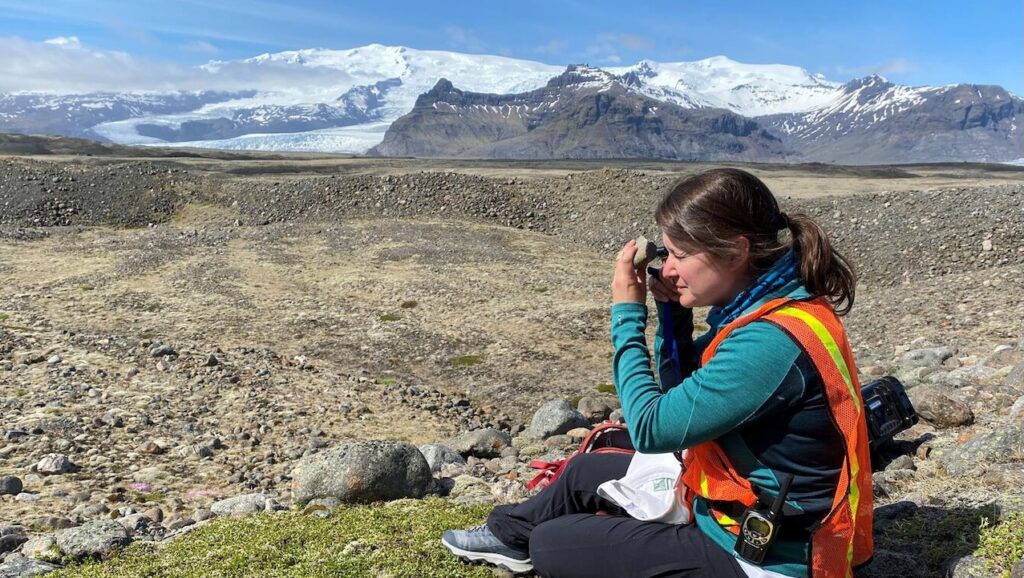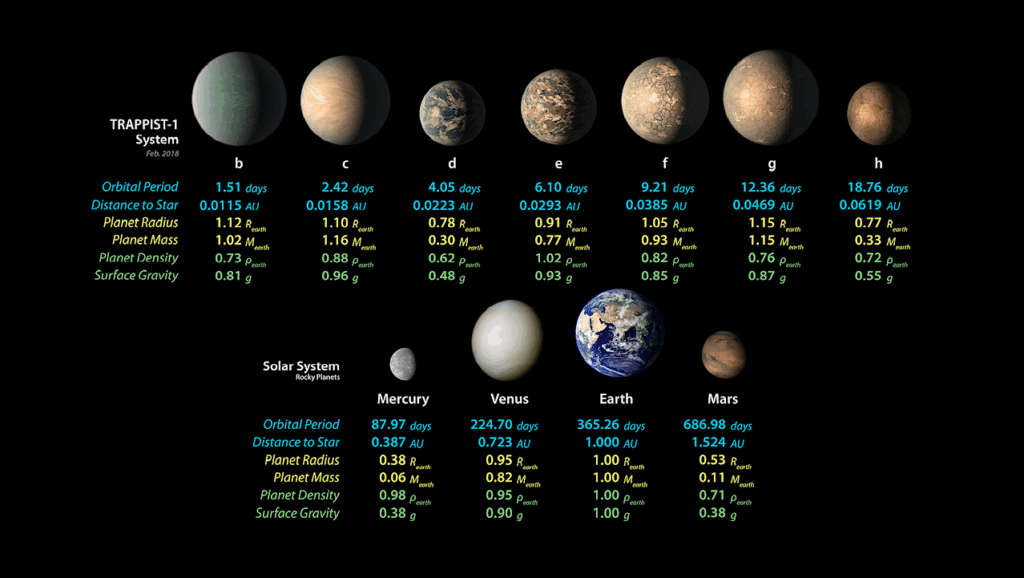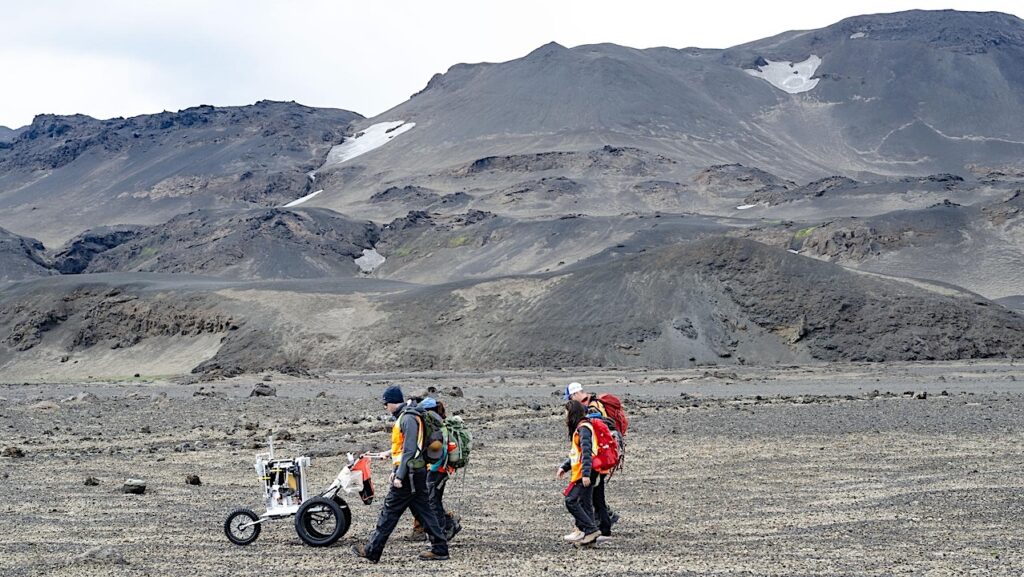Experts on Earth Could Support Astronaut-Scientists on Mars, if They Team Up from the Start

A scene that first played out on the Moon in 1972 happened again, years later, in Hawaii. While exploring the lunar surface, Apollo 17 astronaut and geologist Harrison Schmitt spotted some bright orange soil – an important clue about the Moon’s volcanic history. You can hear the excitement in his voice in recordings, but mission control in Houston couldn’t see what was so remarkable in the video beamed back to Earth.
In 2016, on the lava fields of Hawaii’s Kilauea volcano, a project called BASALT, short for Biologic Analog Science Associated with Lava Terrains, was getting under way. The “astronauts” here were researchers simulating a Mars mission, complete with a scientific support team “back on Earth” – a meeting room a few miles away. Building on the work of Apollo, they were studying how human missions to the Moon and Mars could combine scientific research with exploration.
In a twist on Schmitt’s orange soil, BASALT’s science team noticed a striking yellow-orange outcrop in the video stream from their astronauts’ excursion. It was an obvious choice to study for their geology and biology goals… so, why were the astronauts walking away?? The scientists rushed to transmit messages to “Mars” – Go back! Get a sample! – but the signal was delayed, simulating what missions will really experience communicating between Earth and Mars. What the science team didn’t know was that those rocks were nothing special in person, clearly not worth pursuing.
Camera settings and visual displays can be fine-tuned, but the experience of Schmitt on the Moon and the researchers in Hawaii illustrates the kind of challenge the BASALT team is tackling.
“Moments like this show how all you need is that one issue to throw off the entire Earth-Mars conversation in quite an impactful way,” said Darlene Lim, a researcher at NASA’s Ames Research Center in California’s Silicon Valley and BASALT’s principal investigator. “These types of situations and human reactions are to be expected during a mission, and we have to be ready to manage the consequences and reduce their effects, particularly for science return and discovery.”
To discover these types of mission-critical moments, the BASALT team integrated all the moving parts of a science-driven human mission to Mars. They studied what happens to established procedures when astronauts have a lengthy scientific “to do” list – one that would benefit from the guidance of Earth-bound science experts. When all the results were in, they were published in a special issue of the journal Astrobiology . The BASALT team concluded that astronauts will be able to conduct high-quality research and do so through meaningful conversations with scientists on Earth. But the devil’s in the details – of communications technology and software, of protocols to yield reliable data while keeping astronauts safe, of team dynamics and learned empathy – and they’ll need to be tackled together, from the very start.
Connecting Human Brains… by Text
Rovers and landers sent by NASA to explore the surfaces of other worlds regularly work wonders, but the human brain’s ability to synthesize information in a wildly new context has still got robots beat. That’s one reason why, under Space Policy Directive 1, NASA is to send astronauts to explore the Moon’s south pole in 2024 with the Artemis program and later on to Mars. They will study the geology and potential resources in these places and the possibility of finding evidence of life on Mars, all while protecting that planet from potential contamination from Earth. To best equip astronauts for these tasks, they will need a line of active communication with Earth, the BASALT project found.
“So much intellectual capital will be here on Earth, in people who’ve spent their lives studying one particular research topic,” said Lim. “You can’t download every piece of information in a specialist’s brain to the crew in deep space, so we’ll need to connect them with that broader wealth of information.”
BASALT’s researchers identified the most effective ways to exchange information and affect decision-making while the “astronauts” scientific sampling excursion was progressing – and this across the daunting communications delay: between four and 22 minutes one way for a message traveling between Earth and Mars. They found text helped the sender be clearer and more concise than voice messages and allowed the recipient to prioritize all the requested tasks. Audio did remain necessary, though, for letting the Earth team hear the “astronauts” thought process as they surveyed the terrain and to understand better the context on Mars.
As for video, BASALT found that streaming from “Mars” did help everyone on the Earth side follow the astronauts’ activities. But high-resolution, close-up photos of potential rock samples were critical for the project’s geologists and microbiologists.
Astronauts will know where they need to be in a scientific sampling excursion at any given time, thanks to scheduling software developed or adapted by the BASALT team, and sticking to the official timeline is essential, their studies revealed. It reduced confusion for the scientists, who were working hard to sort through the data coming in from “Mars” and to rank their priorities for samples to gather. Another BASALT invention – a leaderboard style of rankings – allowed both sides to track the changing priorities among potential sampling sites.
Cooperation: An Essential Human Element of Human Exploration
During the simulation, it soon became clear that BASALT’s mission, divided in time and space, was such a balancing act between the needs of different groups that no one was in a position to micromanage another team. The astronauts even led the charge in changing the name of mission control, where the Earth-based science team sat, to “mission support center” to better reflect its role.
The very nature of this type of exploration will involve scientists on Earth giving up control over a critical step of their research: the data collection stage.
“When we first realized we’d have to trust the astronauts in the field to do our sample collecting, we all collectively had heart palpitations,” said Shannon Kobs Nawotniak, BASALT’s deputy principal investigator and an associate professor of volcanology at Idaho State University in Pocatello, Idaho.
To ease their fears, the team came up with a system for sample collection that let the scientists weigh in on this step. They called it “circuit sampling” and built in a way to manage the troublesome communications lag. The astronauts would survey the land in a series of circles and, by the time they completed one circuit, instructions about which samples to collect from the first site were arriving from “Earth.”
“Ultimately, it’s about efficiency,” said Scott Hughes, BASALT’s geology lead and professor emeritus at Idaho State. “When you’ve got people out there on another planet it’ll be expensive, and they’ve only got so much air in their tanks. They’ve got to get the job done, and you need to make sure the plan to support them is in place from the start.”
The focus on cooperation and the empathy that developed between groups were fundamental to the success of BASALT’s missions to Mars-like landscapes on Earth – and had connections back to the Apollo days as well.
“You can’t specifically train for every moment of the mission, so the key is that you train for knowledge of each other and you train for teamwork,” said Eugene Cernan, the last human to walk on the Moon, while listening back on recordings from a Moon walk with Schmitt for an oral history project.
Lim and her team hope future space missions will not only train astronauts in field science but integrate them into a real research operation where the answers are not known in advance. When astronauts study new worlds firsthand and explore the question of life beyond Earth, building on the
genuine success of BASALT’s simulated exploration of Mars will give them a big head start.








